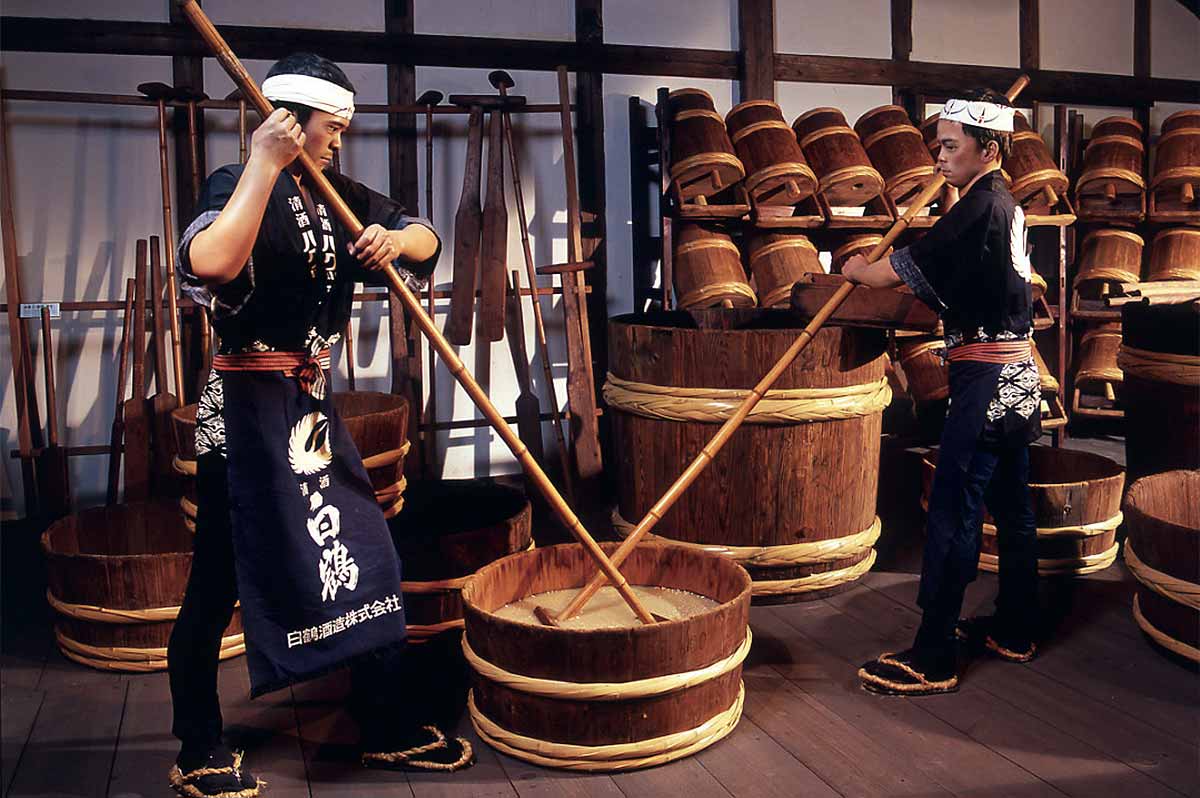Inside A Japanese Sake Brewery

Have you ever wondered what goes on inside a Japanese sake brewery? Imagine walking through the doors of a centuries-old building, where the air is filled with the rich aroma of fermenting rice. Here, skilled artisans work tirelessly, using traditional methods passed down through generations. Each step, from polishing the rice to fermenting and brewing, is a delicate process that requires precision and care. The result? A drink that embodies the essence of Japanese culture and craftsmanship. Whether you're a sake enthusiast or just curious, visiting a sake brewery offers a unique glimpse into this fascinating world.
The History of Sake
Sake, Japan's traditional rice wine, has a rich history dating back over a thousand years. Understanding its origins helps appreciate the craftsmanship involved in its production.
- Nara Period: Sake brewing began during this era, with monks perfecting the fermentation process in temples.
- Heian Period: Sake became popular among the aristocracy, leading to the establishment of the first sake breweries.
- Edo Period: Techniques improved, and sake became widely available, with regional varieties emerging.
The Ingredients of Sake
The quality of sake depends heavily on its ingredients. Each component plays a crucial role in the final product's flavor and aroma.
- Rice: Special sake rice, known as sakamai, is polished to remove the outer layers, enhancing the fermentation process.
- Water: Pure, mineral-rich water is essential. Different regions boast unique water profiles, influencing the sake's character.
- Koji Mold: This mold breaks down the rice starches into sugars, a vital step in fermentation.
- Yeast: Various yeast strains are used to convert sugars into alcohol, each imparting distinct flavors.
The Brewing Process
Sake brewing is a meticulous process that combines traditional methods with modern techniques. Each step requires precision and care.
- Rice Polishing: The rice is polished to the desired level, affecting the sake's quality and taste.
- Washing and Soaking: Polished rice is washed and soaked to achieve the right moisture content.
- Steaming: Steamed rice is cooled and mixed with koji mold.
- Fermentation: The mixture ferments in tanks, with yeast added to convert sugars into alcohol.
- Pressing: After fermentation, the mash is pressed to separate the liquid from the solids.
- Filtration and Pasteurization: The sake is filtered and pasteurized to ensure stability and flavor.
Visiting a Sake Brewery
Experiencing a sake brewery firsthand offers a deeper appreciation for this ancient craft. Many breweries welcome visitors, providing tours and tastings.
- Gekkeikan Okura Sake Museum: Located in Kyoto, this museum offers a glimpse into sake's history and brewing process.
- Hakutsuru Sake Brewery Museum: Situated in Kobe, this brewery showcases traditional brewing techniques and offers tastings.
- Dassai Brewery: Known for its premium sake, Dassai in Yamaguchi Prefecture provides tours and insights into modern brewing methods.
- Kiku-Masamune Sake Brewery: This Kobe-based brewery combines tradition with innovation, offering interactive tours and tastings.
Tasting and Pairing Sake
Tasting sake involves more than just sipping. Understanding its flavors and how to pair it with food enhances the experience.
- Aroma: Swirl the sake gently and inhale its aroma. Notice the fruity, floral, or earthy notes.
- Flavor: Take a small sip and let it linger on your palate. Identify the sweetness, acidity, and umami.
- Temperature: Sake can be enjoyed at various temperatures, from chilled to warm, each bringing out different flavors.
- Food Pairing: Sake pairs well with a variety of dishes. Try it with sushi, tempura, or even cheese for a delightful combination.
The Future of Sake
Sake continues to evolve, with brewers experimenting with new techniques and flavors. The future looks bright for this ancient beverage.
- Craft Sake: Small breweries are creating unique, artisanal sakes that push the boundaries of traditional brewing.
- International Appeal: Sake's popularity is growing worldwide, with more people discovering its versatility and depth.
- Sustainability: Brewers are adopting sustainable practices, from organic rice farming to eco-friendly packaging.
Savoring the Experience
Visiting a Japanese sake brewery offers a unique glimpse into a centuries-old tradition. The process of brewing sake, from selecting the finest rice to the meticulous fermentation, showcases the dedication and craftsmanship of the brewers. Tasting different varieties of sake, each with its own distinct flavor profile, deepens your appreciation for this iconic Japanese beverage.
Exploring the brewery, you’ll notice the harmony between modern techniques and traditional methods. This blend ensures that each bottle of sake maintains its authentic taste while meeting contemporary standards. Engaging with the brewers, hearing their stories, and understanding their passion adds a personal touch to the experience.
A trip to a sake brewery is more than just a tour; it’s an immersion into Japanese culture. Whether you’re a sake enthusiast or a curious traveler, this experience will leave you with lasting memories and a newfound respect for this ancient craft.

